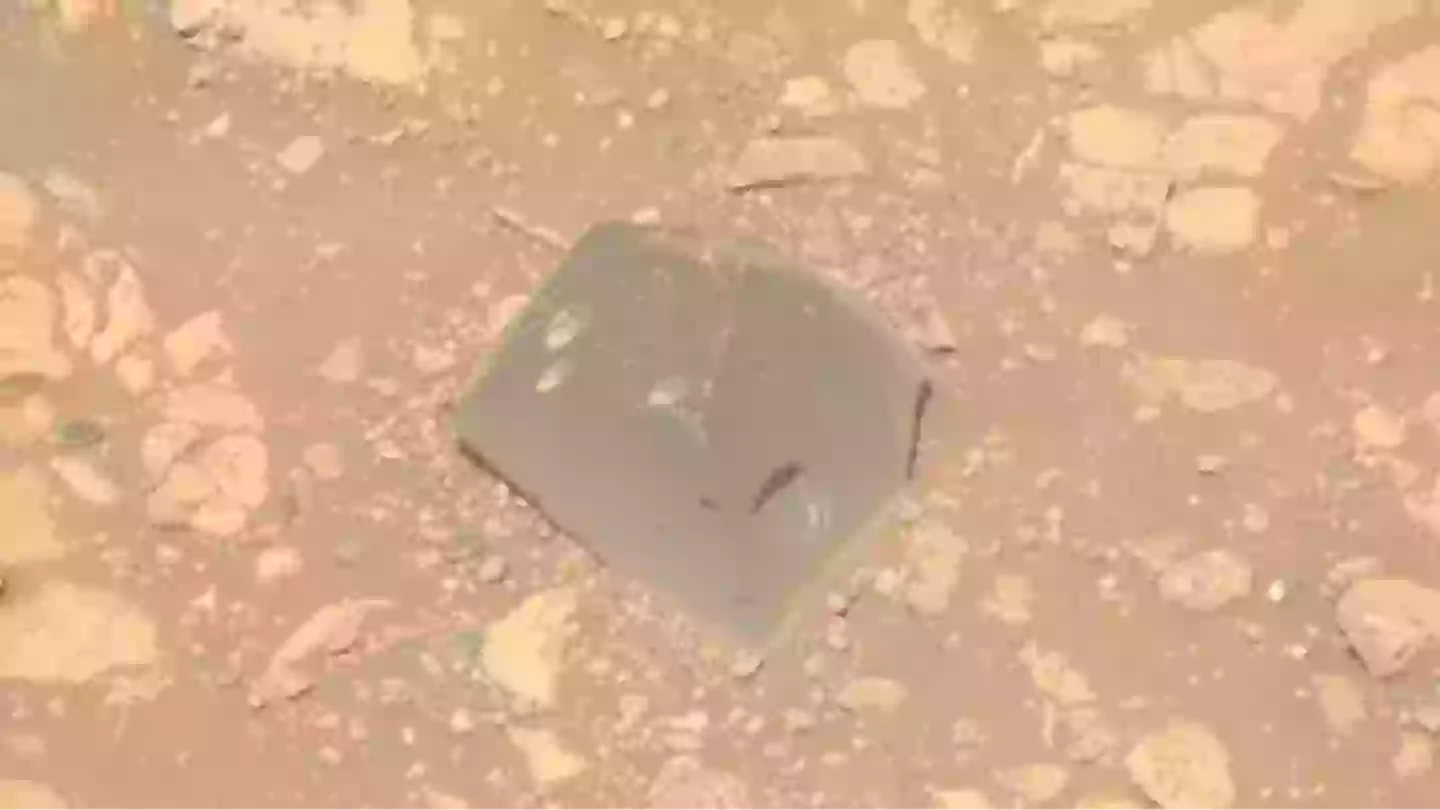NASA recently uncovered an intriguing formation on Mars resembling a skull. This peculiar feature, dubbed ‘Skull Hill’, was detected by the Perseverance rover during its exploration of Witch Hazel Hill, a ridge within the Jezero Crater basin.
This discovery has captured the attention of scientists due to its distinct appearance compared to the surrounding landscape. While the majority of the terrain is characterized by its dusty and light-colored features, Skull Hill stands out with its dark hue and numerous small pits.
This stark contrast has led experts to question whether Skull Hill is native to Witch Hazel Hill or if it was transported there by external forces such as erosion or impact.
There is speculation that this feature might have been relocated from its original site due to natural processes.
Margaret Deahn, a Ph.D. student at Purdue University, elaborates on this in a NASA website post, stating: “This float rock uniquely contrasts the surrounding light-toned outcrop with its dark tone and angular surface, and it features a few pits in the rock.”
She further notes the presence of spherules in the surrounding regolith, suggesting, “The pits on Skull Hill may have formed via the erosion of clasts from the rock or scouring by wind.”
The presence of other dark-toned floats in the Port Anson region has prompted further investigation by scientists to ascertain their origins.
There is also a possibility that Skull Hill might be a meteorite. Deahn notes, “Skull Hill’s dark color is reminiscent of meteorites found in Gale crater by the Curiosity rover… Chemical composition is an important factor in identifying a meteorite, and Gale’s meteorites contain significant amounts of iron and nickel.”
However, recent SuperCam data analysis contradicts the meteorite hypothesis, indicating a different composition.
The rock is currently undergoing analysis to determine its composition and origin, as Deahn explains, “Luckily for us, the rover has instruments that can measure the chemical composition of rocks on Mars. Understanding the composition of these darker-toned floats will help the team to interpret the origin of this unique rock!”
In addition to this discovery, recent findings in space have highlighted potential signs of biological activity beyond our solar system.
K2-18b, a planet orbiting a red dwarf star in the Leo constellation, was first discovered in 2015 by NASA’s Kepler Space Telescope and is approximately 2.6 times the size of Earth.
While water vapor was previously detected in K2-18b’s atmosphere, the James Webb Space Telescope has now identified gases such as methane, carbon dioxide, and dimethyl sulfide.
The detection of dimethyl sulfide, in particular, hints at possible biological activity. Professor Nikku Madhusudhan noted to The Sun, “there is no mechanism in the literature that can explain what we are seeing without life.”
Reflecting on these findings, he remarked, “It’s a question humanity has been asking for thousands of years. It’s a shock to the system. It takes time to recover from the enormity of it.”

